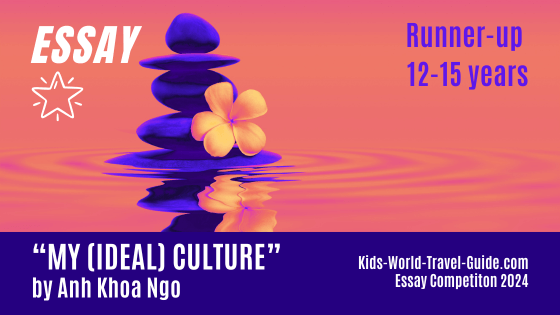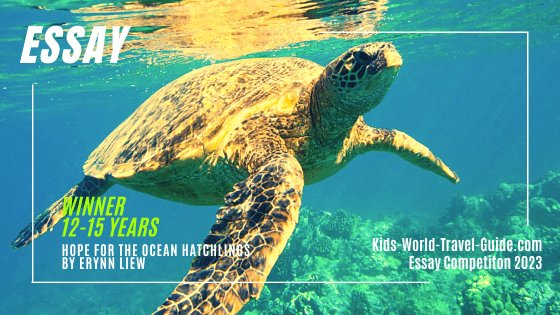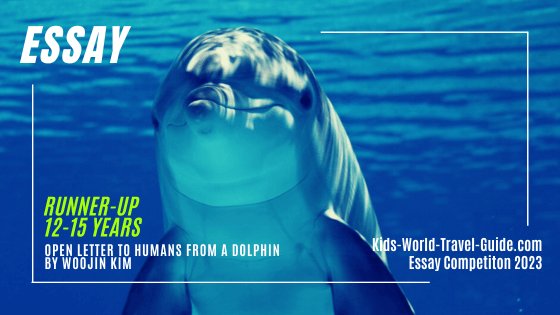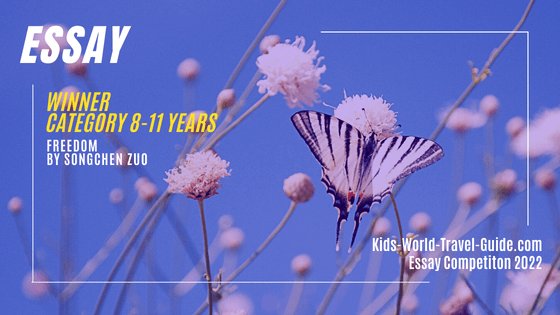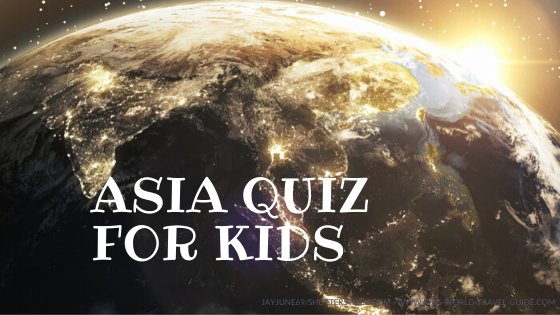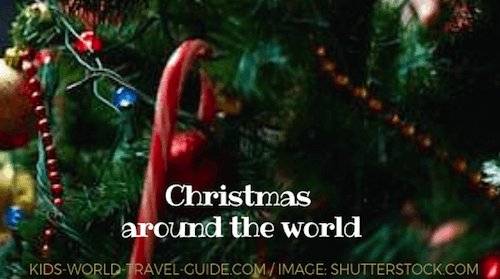- Homepage
- Kruger Park Adventure
Kruger Park Adventure

Commended Entry: "The Kruger National Park - An Adventure" by Theklea Botes from South Africa
This article was submitted in the Kids World Travel Guide Essay Competition 2023 in the Senior Category 12 - 15 years.
 Lilac breasted roller
Lilac breasted rollerThe Kruger National Park - An Adventure
The Kruger National Park, one of the most famous habitats of the Big Five, is located here in South Africa and enjoys world renown for a legitimate reason. Not only is the Kruger one of the inspiring success stories of conservation, it gives anyone a chance to experience nature the way it should be: wild and free. Also, considering the enormous variety of wildlife and plants (much like the South African nation), it should be extremely hard to get bored. It is a real adventure!
The Kruger started out as the Sabie Nature Reserve in the year 1898. The original area was 10,364 square kilometres and located next to the current Mozambique/South African border. The president of that time, Paul Kruger (after whom the national park was named), was concerned about the survival of some animal species in the future.
For a while though, it was mostly just on paper; there were no fences to keep people out since it was a prominent route to Mozambique and to the north of Africa. People traveling through the area still hunted for food and occasionally killed predators in self defence.
The park I know and love today was developed by the efforts and dedication of James Stevenson-Hamilton, a Scott who held the official position of warden between July 1902 and 30 April 1946. He was the first ranger to appoint and delegate others to increase efficiency. His ardent love for nature led him to advocate the merging of the Sabie and the nearby Shingwedzi (est. 1903) game reserves into South Africa’s first national park. Finally, on May 31, 1926, his request was granted and the Kruger National Park was born along with the South African National Parks Board.
Today, more than a million tourists visit the Kruger annually, most of whom are foreigners coming to see the famous Big Five (elephant, buffalo, lion, leopard, and rhino). Safaris through the Kruger are certainly not boring. During a previous visit I saw the beautifully bee-eater (a special type of bird), as well as a few thunderbirds (or ground hornbills, as they’re otherwise known). We also saw a huge herd of elephants drinking at a waterhole near the Punda Maria rest camp. You can certainly anthropomorphise them by watching the way they push and pull each other to get the best drinking spot. The rare kori bustard, one of the biggest and heaviest flying birds, was also spotted. This essay could never have enough space to mention all the incredible things I experienced!
There are more than 500 bird species documented in the Kruger (some endemic to the park), thus it’s a bird-watching paradise. But there are more than the twittering of birds to be heard: with over 120 reptile species, 147 mammal species (including the Big 5), 35 amphibious species, and somewhere between 27,600 and 49,998 insect species, it is certainly quite the colorful circus. One bird you are almost guaranteed to see is a ‘troupant’ (or “Lilac Breasted Roller,” in English,) a colorful little bird commonly seen perched on trees near the road. Other interesting creatures include the ‘likkewaan’ (“water monitor”), vervet monkeys, ostriches, the Big 5 and a plethora of others. Beware of the monkeys though, they are charming little thieves and will take any food they can get their tiny hands on.
And yet, the Kruger has still more to offer! Fungus and plant life might not be the most lively form of life, but it can be a fun game to see how many trees and shrubs you can identify. Try finding a mopane tree for instance, or the green bark of a “fever tree,” known in Afrikaans, my mother tongue, as the ‘koorsboom.’ With just over 2,000 types of plants, including 336 tree species, you probably should not try eating any wild berries! Many are toxic and can guarantee you a trip to a hospital. However, there are also a lot of plants found here with medicinal values, like baobab trees.
So, will you be joining me in the adventure? You could see just about anything; from a leopard catching his prey, to a rare butterfly. The opportunities are endless!

Congratulations on your essay "The Kruger National Park - An Adventure", Theklea. Visiting this fabulous national park indeed is a big adventure and we enjoyed the way you described its foundation and the uniqueness this wildlife conservation area offers to us all! Very well done!
Theklea Botes is homeschooled in Gauteng/ South Africa. English is her First Language. Her Home Language is Afrikaans.
Other South Africa Essays
 Essay Competition 2023 -
Kruger Park Essay Competition 2023 -
Kruger Park |
Competition Winners 2024
Competition Winners 2023
Competition Winners 2022
Popular Pages
Competition 2021 Essays
Recent Articles
-
Venezuela for Kids | Venezuela Facts for Kids | Geography | Landmarks
Jan 07, 26 07:33 AM
Our Venezuela for Kids page provides important facts about Venezuela, the country and people, animals, geography superlatives, economy and so much more -
Eswatini Facts | Africa | Facts about Eswatini | Geography | Swaziland
Jan 06, 26 06:28 AM
Our Eswatini Facts for Kids will provide information about the landlocked country in southern Africa with information about geography, people, food, animals -
Top 10 Famous Landmarks in the World | Most Famous Man-Made Monuments
Jan 05, 26 06:40 AM
These are the Top 10 famous landmarks and most recognisable man-made monuments in the world: Taj Mahal, Great Wall of China, Pyramids of Giza, ... Read more. -
German Christmas Markets 2025 | Christmas in Germany | Travel | Family
Dec 11, 25 07:32 AM
These 10 Wonderful German Christmas Markets with unique family attractions and cheerful atmosphere will be fun to visit with your family this year -
Christmas Traditions in Singapore and France | My favourite tradition
Dec 09, 25 06:58 AM
Christmas Traditions in Singapore and France - My favourite tradition by Laura Lim from Singapore -
Christmas Quiz for Kids | Christmas Fun Quiz | Christmas for Kids 2025
Dec 08, 25 09:03 AM
Our Christmas Quiz for Kids will provide lots of fun facts about Christmas traditions around the world with 20 questions based on our Christmas pages. Enjoy! -
Essay Winners 2025 | Writing Competition | Kids World Travel Guide
Dec 03, 25 09:20 AM
Here are the Essay Winners 2025 and their winning entries: Congratulations and Thank you for all your inspiring stories! -
Why Aotearoa New Zealand is the Best Country in the World | Essays
Nov 21, 25 07:55 AM
Why Aotearoa New Zealand is the Best Country in the World | How Kids in New Zealand see their own country: Essays from Hauraki Primary School
Go back from "Kruger Park Adventure" to Kids-World-Travel-Guide Homepage








